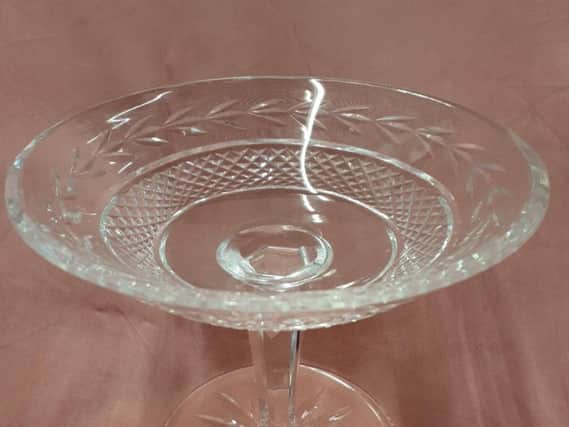Waterford Crystal has really left its mark on world of antiques


This weekend is St Patrick’s Day and when one thinks of Irish collectables, one major manufacturer springs to mind: Waterford Crystal.
Waterford Crystal began in 1783, led by George William Penrose.
Advertisement
Hide AdAdvertisement
Hide AdTheir products are amongst the most prestigious in quality glassware. Investing in a piece of Waterford Crystal is still the first choice for many to mark a wedding or important anniversary to this day.
Waterford Crystal trophies crown the winners in major sporting tournaments worldwide, including golf, Grand Prix and the Ashes. Waterford Crystal chandeliers grace Westminster Abbey, installed in 1966 to mark the 900th anniversary of the abbey’s dedication.
Their Waterford plant now produces more than 45,000 pieces each year using traditional methods, melting down more than 750 tonnes of crystal annually. Behind this success story lies a rocky history of highs, and lows deep enough to force the company to close multiple times, once even ceasing production for nearly 100 years.
In 1676 the English glass company Ravenscroft developed a new process of adding lead to the ingredients of glass, facilitating direct cutting onto the actual glass object by a revolving wheel leaving prisms which refract light to create a brilliant sparkle.
Advertisement
Hide AdAdvertisement
Hide AdTaxes levied by weight crippled the English glass industry in the 18th century, leading to shallower cutting and thinner products. The Irish industry was unaffected, producing heavier, deeper-cut glassware, and it was in this setting that newly-formed Waterford Crystal flourished.
By 1825 heavy taxes were levied on Irish glass too, crippling the industry. Waterford Crystal struggled on until October 1851, and glass production in Ireland ceased altogether in 1896.
It took until 1947 for Waterford Crystal to be restarted by a Czechoslovakian émigré, Charles Bacik. Starting with a workforce of 30 quality craftsmen, he restored the business to the renowned status it enjoys to this day.
Waterford still trades and continues to produce arguably the world’s most beautiful crystal, using the same workmanship they pioneered 230 years ago.
They never produce seconds, so for collectors this means any piece of Waterford you own is a piece of perfection.
